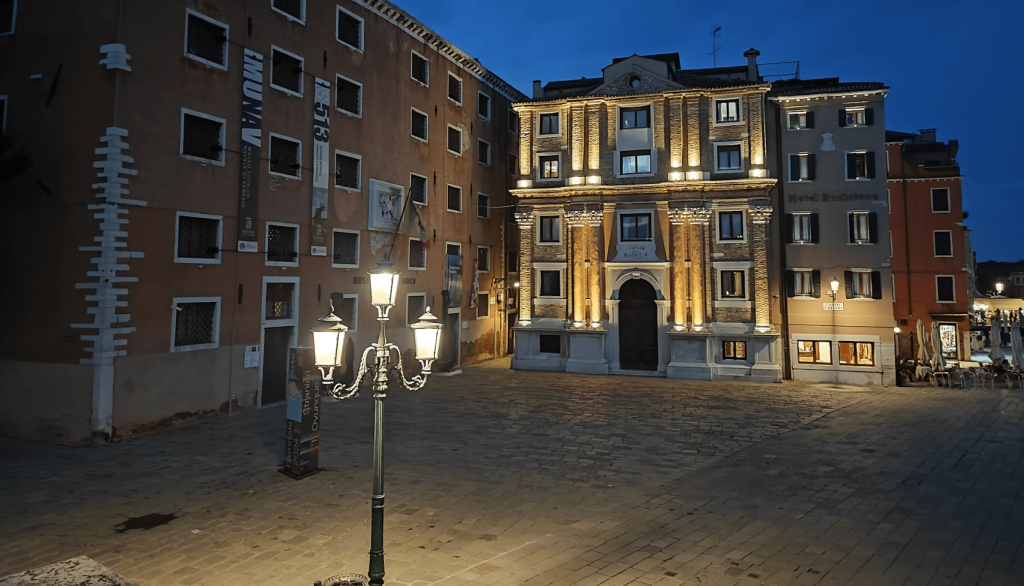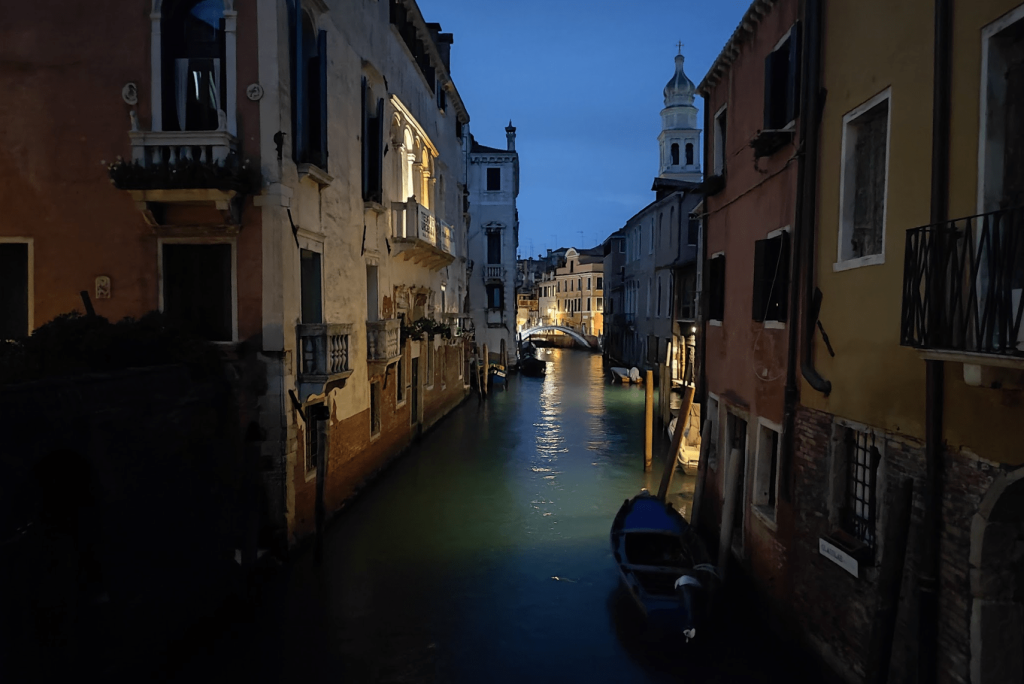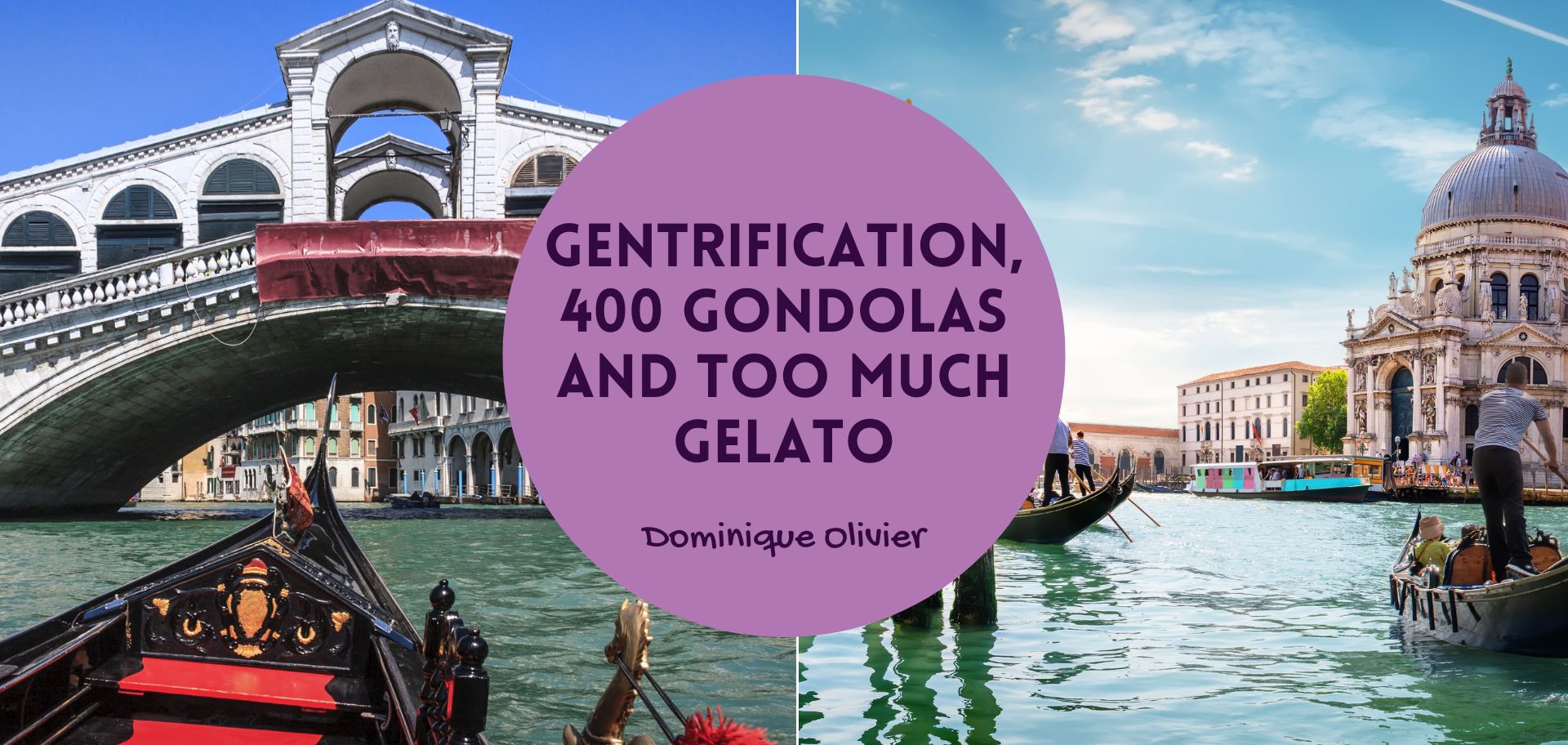By the time you read this, dear reader, I would have been wandering around the Accademia and Uffizi galleries in Florence, seeing artworks that I have admired on pages and screens for the majority of my life. At the time of writing this article, however, I find myself in transit between two cities. Ahead lies an appointment with Michaelangelo’s David. Behind, two days of travel through the buoyant city of Venice, spiderwebbed with its canals and bridges.
There is much to say about Venice, and a lot of it you have probably already heard or read a hundred times. The city’s beauty is not overrated – as canals wane in the distance and the graffitied concrete maze of Mestre zooms past my train window, I am reminded just how much of an otherworldly place Venice really is. When something as pedestrian as a streetlamp is given the full filigree-and-curlicue treatment, not once but a hundred times across the city, then you know that you are dealing with a population that has made a conscious commitment to beautiful things. In this city, form comes first, then follows function.

It is almost hard to believe that people live here permanently, when the whole place feels like an elaborate theme park, sans rollercoasters. You are never more than 50 metres away from a restaurant that serves either pizza or gelato (or both). Souvenir shops selling masks, glass artworks from Murano and an assortment of other touristy tidbits are everywhere. I saw one pharmacy and zero grocery stores, despite travelling across half the city on foot.
Mattia’s story
Venetian children have no bicycles, my gondolier tells me. Instead, they are given rowboats. “And after the rowboat, a gondola?” I enquire. No, he assures me – the gondola is at the very top of the pyramid, due to how difficult it is to steer.
The gondolier is a young man in his early twenties named Mattia. As we travel down the grand canal by night, his oar disturbs the reflections of a hundred bright hotel windows in the dark water. Research before my trip revealed that Italy has more hotels than any other European country. Venice alone welcomed 5.7 million tourists in 2023 – 19 times more than its population of just under 300,000. For a bit of local context, Cape Town, which is undeniably South Africa’s tourism capital, received just over 405,000 tourists in 2024 – less than a tenth of its population of 4.9 million.
You would think that the massive demand for gondola rides from this seemingly never-ending influx of tourists would lead to an overabundance of gondoliers who want to service the market. But becoming a gondolier in Venice isn’t just about steering a boat; it’s a tightly regulated profession overseen by a guild. They issue only around 400 licences, and getting one is no easy task. Aspiring gondoliers have to complete 400 hours of training over six months, followed by an apprenticeship. Then, there’s an exam that tests everything from their knowledge of Venetian history and landmarks to their ability to speak foreign languages and, of course, their gondola-handling skills. Mattia tells me that he has only fallen off his gondola once, so clearly he knows his stuff.
When I boarded the gondola at the dock, Mattia was waiting there with an older gentleman who I initially assumed was his father. Along the way, he explains that this is simply a senior gondolier. Do they work together? Yes, says Mattia. He takes the gondola out when the old man is too tired. Steering the gondola through the maze of canals is hard on the body, so much so that even a young man like Mattia doesn’t work every day. Once, he worked seven 15-hour days in a row, but that was in the high tourist season, he explains. The average gondolier can earn up to 134,000 euros per year, but most of this income is dependent on a good tourist season. When the weather turns cold and the tourists go home, there’s not much for a gondolier to do but wait for their return.
Legacies and repurposes
I’ve written about succession in family businesses before, as you might recall from this article about the Zildjian brand. Gondoliering, as it turns out, is not much different. Mattia’s father is a gondolier, as was his grandfather, and his grandfather’s father. His father is currently upgrading to a bigger gondola, after which his old gondola will pass down to Mattia.
Mattia entertains me with trivia throughout the trip, pointing out buildings left and right. “You see this building behind me here?” he asks, crouching down so that I have a better view over his shoulder. I see an impressive marble façade, gothic windows and a row of statues looking down from a flat roof. “It is a fancy post office”, says Mattia. Another building – this time a palace – is owned by a famous football coach, who left it to his daughter. The outsides of these buildings may be frozen in time, but inside they are clearly given new and modern lives.
“All these bridges were built by Napoleon, who wanted the city to be more walkable”, says Mattia, not without the slightest hint of disdain. “But Venice was meant to be navigated by water, not on land. Did you ever get lost in there?” he asks, pointing into the dark warren of interlacing streets on the other side of the canal. In fact, I have gotten lost multiple times, finding it impossible to distinguish one narrow alley from another. This isn’t helped by the fact that the only street signs you will encounter in Venice are either to the Rialto bridge or San Marco square. If you aren’t going to one of those two places (or something close to them), then you are on your own.

Yesterday, today, tomorrow
Gentrification comes to every city eventually, and Venice is no exception. While an absolutely mammoth effort has been made to preserve the authenticity of the city, gentrification is starting to slip through the cracks like weeds through concrete. Before departing on my trip, I was warned that “real” Italian pizza would not be what I was used to at home; that toppings were kept simple and basically limited to cheese, basil and truffle oil. Yet in more than one canal-side pizzeria, I find such oddities as sweetcorn and pineapple presented as pizza toppings. In gelato shops, bright blue tubs of “unicorn” flavoured gelato are wedged between stalwarts like vanilla and stracciatella. Restaurants close to the water offer an Aperol spritz “on the go”, poured over crushed ice in a plastic cup with a lid, like a slushie at the movies.
Before you think of me as stuck in my ways, let me assure you that I am not against innovation or improvement. A spritz in a to-go cup is a clever solution that appeals to many a tourist, who may want to spend more time walking the city than sitting in its restaurants. I suppose my concern is with the traditions that get lost in the pursuit of efficiency and ease.
As the city has had to be modified to accommodate more and more people, choices have been made that have strayed from its aesthetic traditions. As an example, many of the bridges on the outer edges of the city have had ramps added to them in order to accommodate prams and wheelchairs. These thoroughly modern metal structures with their straight bannisters look oddly out of place next to the cobbles and carvings of the stone bridges that they now inhabit. The facades of buildings, proudly displaying the sections of exposed brick and well-weathered paint that give the city its distinctive “old” feeling, now also house lengths of ethernet cabling and electricity boxes. Next to a little shop offering hand-embroidered aprons in the market square, a discount store sells a variety of novelties that look as though they were imported from China. Some of these things are modern necessities, and there is no way that the city could continue to exist and function well in this age without certain modifications. But there remains a part of me that wishes it was possible to stop the march of time and preserve this place and the traditions that make it so special, with ramps for wheelchair access as the exception!
Once upon a time, a gondola was one of the only ways to navigate Venice. Today, these centuries-old canals are trafficked by speedboats, water taxis and even construction cranes. The gondolas persist as an attraction, a legacy passed down through multiple generations and now kept alive by tourists just like me. When my gondola ride is over, I am dropped off at the same stop from which I departed. On reflection, I realise that the gondola is more of a time-machine than a mode of transportation: I have travelled to the past and been brought back to the same square metre of the city that I left from, just as Mattia’s family has done for generations.
About the author: Dominique Olivier

Dominique Olivier is the founder of human.writer, where she uses her love of storytelling and ideation to help brands solve problems.
She is a weekly columnist in Ghost Mail and collaborates with The Finance Ghost on Ghost Mail Weekender, a Sunday publication designed to help you be more interesting.
Dominique can be reached on LinkedIn here.





Thoroughly enjoyed reading this article. I couldn’t agree more regarding the unfortunate ‘need’ for these beautiful, historic cities to modernise.
Great article. Thanks
I was in Venice for 2x days this year June and I can relate to you saying “It is almost hard to believe that people live here permanently, when the whole place feels like an elaborate theme park, sans rollercoasters.” I kept thinking I was going to see some famous movie-star or celebrity pass by.